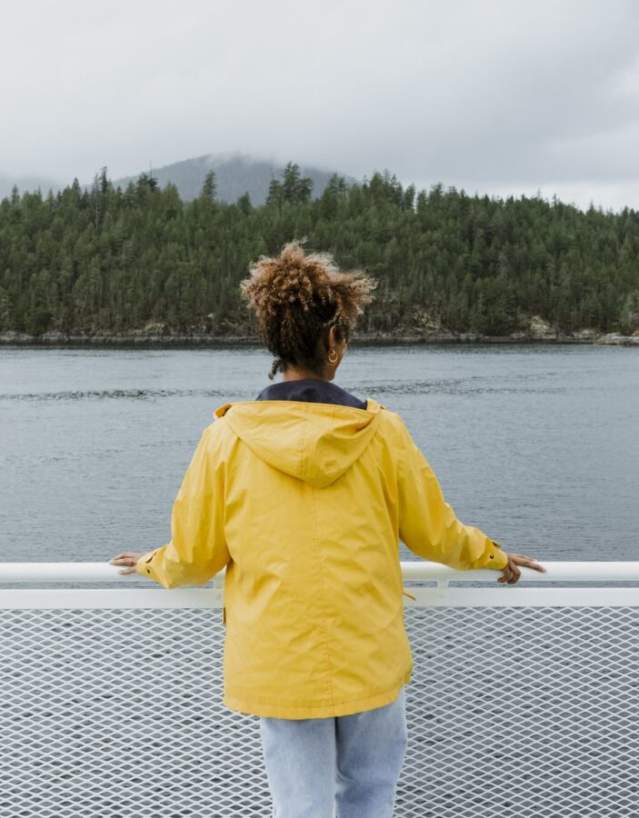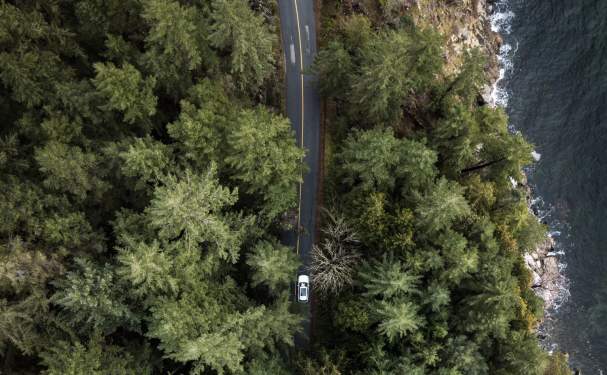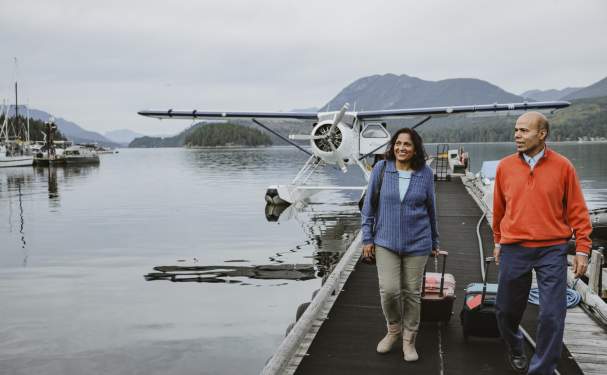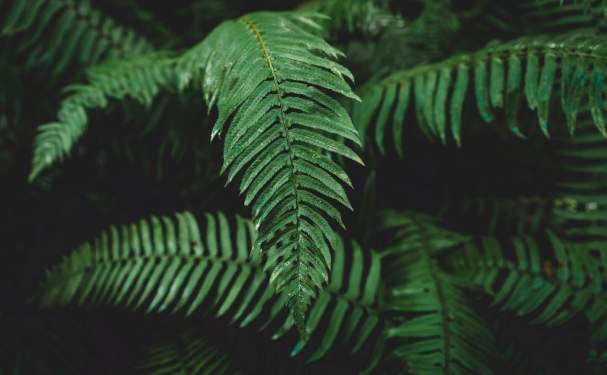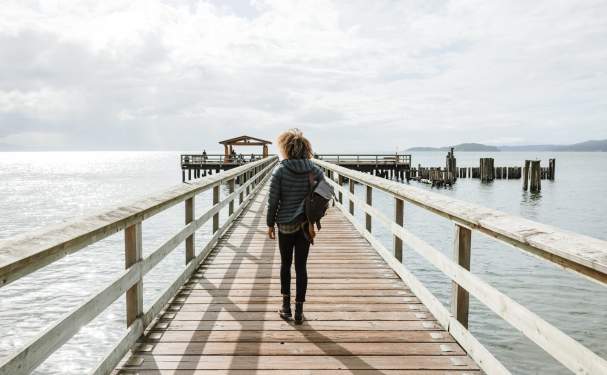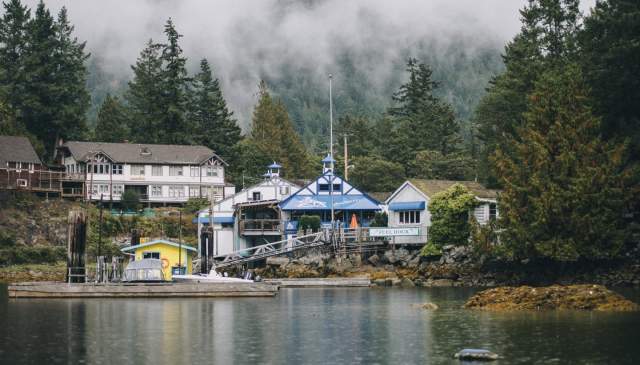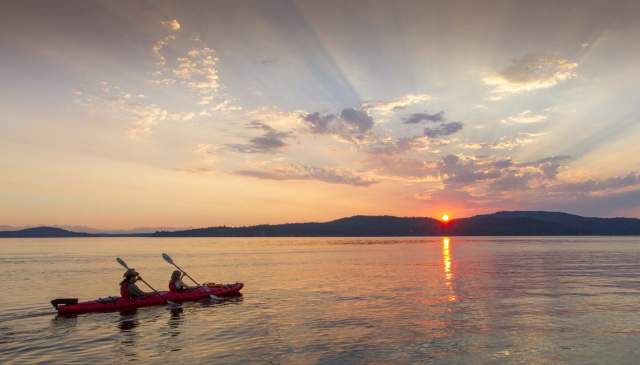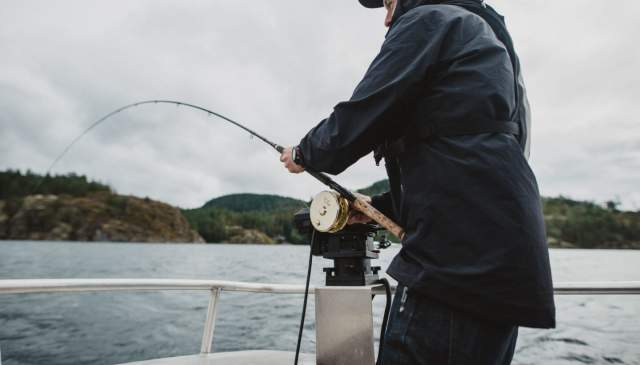Weather
The Sunshine Coast has a mild coastal climate—meaning that the weather here is quite comfortable year-round. The Sunshine Coast faces southwest and, akin to the name, enjoys more sunny days than nearby areas since it sits on the leeward side of Vancouver Island. Unlike many Canadian destinations, it rarely snows here, but in winter, a quick gain of elevation in our nearby mountains will typically reveal snow for those who seek it. And while we’re known as the Sunshine Coast, visitors should always be prepared for rainy days in our temperate rainforest.
What to Pack for Your Visit to the Sunshine Coast
Wondering what to pack for your visit? Layers. No matter the season, you’ll want to quickly be able to add or shed a layer when needed. Summer on the Coast is typically warm and dry (reaching highs of approximately 30 degrees Celsius/86 degrees Fahrenheit), but there can be occasional rain and temperatures are often cooler at night. Casual summer wear like shorts and t-shirts is typical for summer days, with light layers such as a fleece jacket for evening excursions.
Winter on the Coast is typically mild and moist (between approximately 2 – 10 degrees Celsius/35 – 50 degrees Fahrenheit), and a waterproof jacket is a must. It’s essential to be prepared for changes in weather, especially if you’re planning to be in the backcountry. Quick drying fabrics go a long way in the rainy pacific northwest, and the Sunshine Coast is no different. Wools and synthetic fabrics will dry quickly in the damp weather, leaving you cozy, warm, and comfortable.
It’s also a good idea to bring comfortable shoes or boots (since you’ll likely be doing some walking or hiking), a hat, sunscreen, an umbrella (just in case), and a reusable water bottle you can take with you as you explore. Don’t forget to consider the activities you might be participating in. If you’re visiting in the summer, consider bringing a swimsuit, beach towel, water shoes (great for rocky and pebbly beaches), sun protection, and reef-friendly sunscreen. If you’re visiting in the winter and plan on snowshoeing or cross-country skiing in the mountains, pack your winter gear (including warm, waterproof outerwear such as gloves, pants, jacket, boots, winter hat, and quick-drying, non-cotton base layers for underneath).
Marine Weather and Tide Tables
Boaters can visit weather.gc.ca for details on marine weather warnings and advisories on BC’s south coast. Wind and other weather conditions can impact tides. Click the links below to view local tide tables by community:
- Gibsons
- Porpoise Bay (Sechelt inside)
- Halfmoon Bay
- Irvines Landing (Pender Harbour)
- Powell River
- Lund
- Texada Island
Know Before You Go
Planning a trip to the Sunshine Coast? Here’s what you need to know before you go.
Getting Here & Getting Around
Getting to the Sunshine Coast is part of the adventure.
Travel Guide & Maps
Looking for some trip inspiration and planning tools? Check out the Sunshine Coast Travel Guide, as well as a variety of local maps and resources.
Visitor Centres
Visitor Centres on the Sunshine Coast that offer professional visitor counselling, helpful travel information and literature, and assistance with activity and accommodation reservations.
Itinerary Planner
Plan your next trip to the Sunshine Coast. Add business listings, upcoming events, and special offers to your itinerary before sharing it with your travel companions.
Accessibility
The Sunshine Coast of British Columbia strives to be an inclusive travel destination to people of all abilities. Read on to learn more about accessible travel.
Coast Blog
Tips For Camping on the Sunshine Coast
There’s nothing like packing up the tent or RV for a weekend of camping. To help you make the most of your time…
